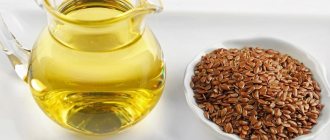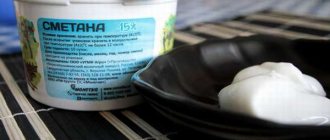Home / Products / Eggs and dairy products / Storing cottage cheese in the refrigerator
All fermented milk products tend to spoil quickly. In products treated with preservatives, the process of reproduction of starter bacteria does not stop, that is, the fermentation process continues. As a result, the shelf life of absolutely all dairy products is short. In order for them to last longer and remain just as useful, you need to know some rules. Cottage cheese will definitely last better and longer in the refrigerator. For example, the shelf life of cottage cheese in the refrigerator depends on how the cottage cheese was stored before it entered your refrigerator, whether there are preservatives in the product, and whether GOST standards were observed during the production of cottage cheese. Proper storage of cottage cheese in the refrigerator is not a tricky task, but there are mandatory requirements. Let's figure out what the conditions and shelf life of cottage cheese are.
Even the most useful and safe product can cause poisoning if the rules for its storage are violated. Not fresh cottage cheese can cause indigestion, and even worse, cause dysbacteriosis and even food poisoning. Therefore, it is very important to understand this and know how long you can store it and under what conditions without fear for your health and your loved ones.
Shelf life of cottage cheese
Natural cottage cheese is a fermented milk product that is highly perishable. The shelf life of cottage cheese is regulated by sanitary standards. Ideally, the time frame is quite long, but you can’t always be sure that you bought completely fresh cottage cheese. Therefore, it is better to know about the maximum deadlines, but not to push it to the deadline.
Cottage cheese is stored in the refrigerator from 2 to 14 days, depending on packaging and pre-treatment.
| Dependence of storage time and temperature on the type of cottage cheese | ||
| Type of cottage cheese | storage temperature | shelf life |
| Pasteurized (opened) | 0°C – + 3°C | 1 day |
| Homemade cottage cheese | 0°C – + 3°C | 2 days |
| Long-term storage (only in sealed packaging) | 0°C – + 6°C | 14 days |
| Pasteurized (in closed packaging) | 0°C – + 6°C | 5-7 days |
Outside the refrigerator, cottage cheese can remain fresh for no more than a day, and if the temperature is above 15°C, then for a matter of hours.
How to keep it fresh for a long time
Low-fat cottage cheese has the longest shelf life. According to the rules, it is made from milk after separation - removal of cream. Dairy products are stored a little worse (5-9%). Cottage cheese 12-18% sours faster and becomes slimy.
How to keep cottage cheese fresh for a long time in the refrigerator:
- Immediately after purchasing, divide the weight of cottage cheese into portions and transfer from the bag to an airtight container.
- You can place a piece of sugar at the bottom. It will extend shelf life and improve taste.
- Place on the refrigerator shelf.
To prevent the cottage cheese from drying out on top, we recommend choosing containers according to size. Can be covered with cling film.
Storage conditions
The optimal storage location is the refrigerator. The recommended temperature according to SanPin requirements is from 2 to 6°C, freezing is allowed at parameters -1-0. In this way, you can increase the shelf life by 1-2 days.
What should you store it in?
For store-bought cottage cheese, the best option is factory packaging. There is no need to open it in advance, introduce oxygen and microbes. The situation is more complicated with loose and homemade fermented milk products.
Housewives often use plastic containers for storage. We strongly do not recommend doing this. Such dishes spoil the taste and accelerate rotting. An alternative is ceramic, glass, enamel containers with lids.
What you can do:
- ceramic, enamel containers;
- glass containers;
- vacuum bags;
- foil, parchment;
- cotton fabric.
What should not be stored in:
- plastic bags;
- plastic containers;
- open plates, bowls;
- metal containers.
Vacuum
Vacuum bags are ordinary, the air is squeezed out, the edges are sealed. There are also special bags and devices for removing oxygen. In the first case, the shelf life is 4-7 days. If you have a special device, the storage period increases to a month. You can freeze in vacuum bags, which is not recommended in regular polyethylene.
Enamel and glassware
The ideal container for storing curd products is enamel or glassware.
You can store the curd in a glass jar or enamel pan like this:
- Line the bottom of the dish with a cloth to keep the product crumbly.
- Place a few pieces of refined sugar in a container to prevent premature spoilage of the product.
- Place the curd in a bowl, close the lid tightly and put it in the refrigerator.
If the dish does not have a lid, it can be replaced with regular cling film.
Foil and parchment paper
When storing the curd treat in the refrigerator, it is recommended to wrap it in parchment paper or foil. This packaging method does not significantly extend its shelf life, however, when compared with using enamel or glass containers for this purpose, it can significantly save space in the refrigerator.
Cotton fabric
Cotton fabric is perfect for storing cottage cheese. It is wrapped in a slightly damp cloth and placed in a container that is closed with a lid, and then put in the refrigerator. With this packaging method, the curd does not air out and also maintains the required level of humidity.
Plastic bag
Storing cottage cheese in the bag in which it was purchased is undesirable. Condensation accumulates in plastic packaging, and the lack of air leads to fogging of the product. As a result, the mass acquires a musty smell and changes its thickness to a less uniform one with admixtures of wet pieces.
It is recommended to store the dairy product in a plastic bag for consumption in its pure form for no more than one and a half days. After this period has expired, the mass can only be used for preparing dishes that are subject to heat treatment.
Cottage cheese storage options
A few tips will help you preserve the freshness and benefits of this product in the refrigerator, but please note that they are not equally effective. Let's look at this issue in more detail.
Storage open , that is, in a plate or container (in a container in which the product can be served).
This method is used very often, since amateurs do not allow the product to spoil - it is quickly consumed at breakfast or when preparing other dishes. It is convenient and practical to hold the product in such a container. Any family member who wants to enjoy cottage cheese can set aside the required portion for themselves at any time. How long can you keep the dishes open? – no more than two days.
In a plastic bag (this is mainly how “fresh” or loose cottage cheese is sold). Many purchased cottage cheese do not unpack immediately, but leave it in the bag. In this form, the cottage cheese will not last long. Cottage cheese purchased in the morning can be considered conditionally good in the evening, since it simply “sweats” in cellophane. Therefore, after a few hours a specific musty smell appears. The product is then only suitable for baking. Without heat treatment, in its raw form, the use of such cottage cheese is strictly not recommended.
in an enamel pan or bowl . In this form, it can be stored for four to five days, and is considered fresh within two days after purchase (this is only if the product was really fresh at the time of purchase). Many cottage cheese lovers recommend covering the enamel bowl with a tight lid and putting a few pieces of refined sugar into the bowl. Sugar absorbs moisture from the product, which stops the formation of musty odors.
All these options do not allow you to significantly increase the shelf life of cottage cheese or maintain its freshness. But there is a trick, by resorting to which you can achieve an increase in terms of up to a month. Storing cottage cheese in the freezer (freezing) and in the refrigerator. Let's look at this option in more detail.
How to store without refrigeration
It is very difficult to store dairy products without refrigeration. If you can extend the shelf life of milk by boiling, and butter by wrapping it in parchment soaked in salted water, then these methods do not work with cottage cheese.
Still, there are ways in which, if absolutely necessary, you can extend the viability of this product:
- Place the cottage cheese in a clean and dry glass jar, compacting it as tightly as possible so that air does not penetrate. Cover the container with gauze soaked in salt water. Place in a cool place, protected from light.
- In the past, this method was also used: homemade cottage cheese was placed in an enamel pan or a special barrel. The walls of the container were pre-treated with hot steam, and the bottom was sprinkled with table salt. The top of the product was covered with a cloth soaked in saline solution and closed with a lid on which oppression was placed.
However, even at a temperature lower than room temperature, pathogenic bacteria begin to grow in the cottage cheese, while lactic acid bacteria are inhibited, which leads to spoilage of the product.
Tip of the day
Buy the product in quantities in which you can use it for food or for making dishes within the next 24 hours.
Is it possible to freeze cottage cheese?
You can freeze cottage cheese if you do not plan to prepare a dish using this product in the near future. But this procedure must be carried out with knowledge of certain rules. In this case, the shelf life of the cottage cheese will even reach several months.
Thawed cottage cheese tastes the same as before freezing, but there may still be changes in consistency. This cottage cheese will not be crumbly like it was before freezing. It will look like a curd mass.
Cottage cheese is a very delicate, “living” product. It has a pleasant milky taste, delicate aroma, dense creamy grain texture. But it should be taken into account that all these “charms” will be lost if you decide to store the cottage cheese for a long time and use the freezer for this. Also, most of the beneficial substances that the fresh product is rich in will “disappear.”
The longer a product is stored in the freezer, the more valuable and important microelements and vitamins are lost. If the cottage cheese is prepared and the process of “quick freezing” is carried out, then there will be minimal “losses” in quality and such a product can be given in its pure form even to children.
Important! You should not freeze cottage cheese in its original packaging. In factory foil, the texture of the cottage cheese will suffer greatly. Cottage cheese bought in a plastic bag will have an unappetizing, gray tint and musty smell.
But not all dairy products are critical to frozen storage. Butter can be stored in the freezer for a long time without any problems. You can read about this in this article by following the link.
What can you cook from expired cottage cheese?
Surely every housewife has had a pack of cottage cheese lying around somewhere in the corner of the refrigerator. What to do? After the expiration date, such a product can be used, but only if there is no change in color, odor, no mold, and the expiration date is less than three days ago. Once the product has been heat treated, it can be eaten.
There are a huge number of recipes with expired cottage cheese. These include the well-known cheesecakes, casseroles, buns, dumplings, cookies and much more.
It all depends on the flight of your imagination and personal preferences. Recently, a special sensation has been caused by the “royal cheesecake”, which is easy to prepare but has a very delicate taste. Everyone has the ingredients to create it at home: raw cottage cheese, eggs, butter, flour, sugar. You will also need a little time and desire. Simple, right?
Shelf life of cottage cheese in the freezer
How long cottage cheese will be stored in the freezer depends directly on the temperature in the chamber:
- at a temperature of -2 °C you can store cottage cheese for a whole week without fear of spoilage of the product;
- from -12 to -18 °C, the cottage cheese can last for two weeks;
- at -25 °C the product will remain fresh for up to 20 days;
- when deep frozen (-35 °C), the cottage cheese will “stay” intact for up to a month.
Important to remember! Full-fat cottage cheese will be preserved in the freezer with minimal loss of quality, without significantly changing its consistency. But the dietary analogue becomes very crumbly and dry.
How long does cottage cheese last at room temperature?
In ancient times, when people did not have refrigerators, homemade cottage cheese was wrapped in a pre-moistened clean cloth. Then they put it in a cool, dry place where the temperature did not exceed +15°C. Using this simple method, it could be preserved for up to two days.
There is another way to preserve cottage cheese at room temperature:
- A deep enamel pan is sterilized with hot steam or doused with boiling water.
- Then the container must be dried.
- Coarse salt is poured onto the bottom in a dense layer, followed by cottage cheese.
- Clean fabric is soaked in a concentrated salt solution and wrung out.
- The cottage cheese is covered with this cloth, a plate should be placed on top, and a medium-heavy load on it.
If the room temperature is no higher than +15°C, such a product can be stored for about a week.
Freezing technologies
It’s decided that you can freeze it. Now let's look at the nuances of the practical issues of this process. The procedure will be something like this:
- Divide the product into portions if you purchased a lot of product. This is done to ensure that each curd piece is completely used after thawing.
- If the consistency of the cottage cheese has large lumps, you should crumble them so that they freeze faster, and when defrosted, thaw faster.
- It is better to store cottage cheese in the freezer in a glass or ceramic container with a tight-fitting lid. There is no need to fill it all the way to the top, since the moisture will increase in volume during freezing.
- Be sure to put a date (put it on the lid with a marker or include a signed piece of paper) so as not to miss the expiration date.
For storing cottage cheese in the freezer, granular, but not paste-like cottage cheese is best suited. This issue has been addressed previously.
Quality cottage cheese standards and norms
According to GOST, cottage cheese is a product obtained only from dairy raw materials through protein fermentation. Milk is fermented in two ways, using bacterial starter or rennet with calcium chloride. Types of milk used:
- whole;
- low fat;
- normalized;
- restored.
The shelf life of cottage cheese and cottage cheese products varies. The storage time is indicated in San PiN:
- natural curd product – 72 hours;
- for children – 36 hours;
- curd products – 24 hours.
GOST 31453-2013 clause 8.2 - the manufacturer can independently set the shelf life of cottage cheese and cottage cheese products.
They buy dairy products based on consistency: prepared from natural milk at low temperatures and without the use of calcium chloride, the dish will be softer, more tender, and uniform in appearance. It is this kind of food that is better absorbed by the body.
Proper defrosting of cottage cheese
No matter how long the cottage cheese lies in the freezer, the reverse process (defrosting) will take much longer. To return cottage cheese from a frozen state to an “edible” state, you don’t need to do much:
- Transfer the package with the preparation from the freezer to any shelf of the refrigerator and leave for 10-12 hours.
- Then, after making sure that the cottage cheese has completely thawed, strain the separated whey through cheesecloth.
Now, defrosted cottage cheese can be used to prepare your favorite dishes or consumed “live.”
Attention! Under no circumstances should you use heat treatment during defrosting! Exposure to even room temperature will cause product spoilage.
What should I do if, after opening, a defective product is discovered?
In this case, according to the law, it is possible to return such a product to the store within the expiration period indicated on the packaging.
Important. Once the expiration date has passed, selling the product is strictly prohibited.
What if the product is not replaced?
He is obliged to accept the goods and conduct a quality check. If the seller accuses the buyer that the product has deteriorated due to his fault, an examination is ordered, which is carried out at the expense of the seller in the presence of the client.
The buyer has the right to challenge the result of the examination in case of disagreement. If, after the examination, it is established that the product has deteriorated through no fault of the client, the seller must pay the cost of the goods; otherwise, the buyer will reimburse the seller for the costs of conducting the examination.
If the seller refuses to pay the money, a claim is filed. If this does not lead to payment of the cost of the goods, the buyer should go to court.
Shelf life of homemade cottage cheese in the refrigerator
Ambiguous answer about the shelf life of homemade cottage cheese in the refrigerator. It all depends on the time period, which depends on how quickly the cottage cheese gets into the consumer’s refrigerator. A natural reasoning would be that the less time passes from the moment of production (production) of cottage cheese to placing it in the refrigerator, the longer it will remain fresh and edible.
The place for cottage cheese in the refrigerator is on the top shelf, near the freezer.
Homemade cottage cheese can be safely stored on a shelf under the freezer for up to 5 days. But in vacuum packaging (packed immediately after production), the storage time of cottage cheese can already extend up to 30 days.
Another option for extending the shelf life of homemade cottage cheese is to place it in a special chamber where the temperature is kept at a level from 0 to +1 °C with minimal humidity. But such a camera may not be in every refrigerator.
We remember that all storage conditions must be observed:
- Location in the refrigerator. Closer to the freezer, the air is colder.
- Low humidity. The drier the product, the better, the less reason for the development of bacteria.
- Correct container. A hermetically sealed container made of glass or plastic is ideal.
How expiration dates depend on packaging, fat content and manufacturing method
At retail outlets, cottage cheese of varying percentages of fat content is presented, in plastic cups or packs of various weights, intended for special dietary or baby food. Buying any curd products to suit your taste today is not difficult.
However, it should be remembered that, like any other dairy product, cottage cheese is perishable. Its specific shelf life is determined by GOST, specified in SanPiN documents and depends on:
- Heat treatment method. Factory-made cottage cheese, in the production of which special heat treatment technologies were used, will be stored longer.
- Storage temperature, which should not exceed 2-6 °C, and for cottage cheese for long-term storage, the optimal temperature is -18 °C.
- Packaging. The product in a vacuum container has the longest shelf life. It can reach 30 days. Cottage cheese is stored longer in a wrapper made of special foil or parchment than in a simple paper package.
- Fat content. Cottage cheese with a high percentage of fat content (from 18%) can stay fresh for less time than 9% semi-fat, made from whole and skim milk, or low-fat 2-5%, made from skim milk.
The fattier the cottage cheese, the less protein, moisture and acidity it contains.
Tip of the day
When purchasing cottage cheese, pay attention to the product label, which indicates the product's release date and expiration date.
Shelf life of loose cottage cheese
Many people prefer to buy only home-made cottage cheese, believing that only such cottage cheese contains necessary and useful elements. Others buy only factory-made cottage cheese. We all have the right to choose, but we need to know that both a high-quality factory product, manufactured according to the regulations of GOST 31453 - 2013, and cottage cheese from a farm, have certain characteristics:
- the consistency is soft, plastic, with the presence of small particles of milk protein;
- the color is uniform, milky, with a slight fawn tint throughout the entire mass;
- the low-fat product releases a small amount of curd whey;
- sour milk taste;
- there is no foreign odor.
The shelf life of loose cottage cheese without packaging is 24 hours, but do not forget that cottage cheese will not be stored longer in a plastic bag (the kind of container most often used on the market).
And only pasteurized cottage cheese that has undergone heat treatment can be stored for up to 5 days.
How to determine freshness?
Many people buy cottage cheese exclusively in the store, but there are also those who prefer only the product purchased at the market. In both cases, there is a risk of buying a product that is not of high quality. Let's figure out what you need to pay attention to in order to choose natural and high-quality cottage cheese from all the variety of products.
- Package. It must be airtight, so the risk of pathogenic bacteria getting into the cottage cheese will be minimal.
- Best before date. Real cottage cheese, according to GOST, can be stored for no more than 72 hours. If this number is higher, then you have a product with additives.
- Name on the label. According to the law, a product containing starch and vegetable fats cannot be called cottage cheese (such products are called differently - cottage cheese, curd mass or curd product).
- Ingredients on the label. The name “cottage cheese” must be indicated, as well as the number of lactic acid bacteria.
- Color. Natural cottage cheese must be white or white-cream.
- Price. It cannot be very low, since a lot of milk is used to make cottage cheese.
When buying loose cottage cheese, pay attention to its color, smell, taste and structure.
- The smell is neither sweet nor sour.
- Taste – without acid and bitterness.
- The structure of the cottage cheese must be crumbly; it is this property that will help distinguish real cottage cheese from the curd mass.
At home, it is possible to check cottage cheese for the presence of the following additives:
- Starch. If you drop a drop of an alcohol solution of iodine on the cottage cheese and it turns blue, it means that the product you purchased contains starch.
- Vegetable fats. To check, place a small amount of cottage cheese on a plate and leave in a warm place for one day. If the product dries and becomes crusty, no sour smell appears and no yellow spots form on its surface, then the cottage cheese is natural. If everything is the other way around, it means this is a fake.











